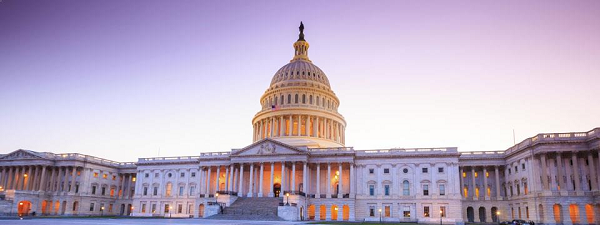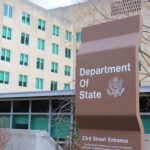It has been apparent for quite some time that the United States is facing an acute national labor shortage across various industries since the start of the COVID-19 pandemic in 2020.
Experts across agencies and organizations confirm this: according to the Secretary of the Department of Labor, Martin Walsh, “a lack of workers is the biggest threat to the U.S. economy in the long term–and immigration and apprenticeships are key to addressing the shortfall.” Chair of the Federal Reserve Jerome Powell has posited that a certain segment of the workforce never came back after Covid, either due to accelerated retirements, or the fact that close to half a million who would have been working died from the disease. Powell also blamed lower migration as a factor and concluded “There aren’t enough people. We need more people.”
Researchers at UC Davis estimate that out of 10.3 million open jobs in the U.S., almost 400,000 are in construction and another 1.6 million in hospitality. The American Trucking Association recently reported a shortage of 80,000 drivers in 2022 and predicted that the shortage could reach 160,000 by 2030.
Where do these workers come from? Industries such as construction, tourism, agriculture, and hospitality services are historically reliant on foreign nationals that come to the U.S. as seasonal workers to serve these industries. From the start of the COVID-19 pandemic when immigration came to a screeching halt, consulates across the world were closed for routine visa services for upwards of two years, and they are now facing historic backlogs and delays in scheduling and adjudicating visa applications across all visa types, including work visas.
One of the visa classifications designed to serve most of these industries is the H-2B. This visa allows employers or agents in the U.S. that meet certain requirements to bring foreign nationals to the United States to serve in temporary nonagricultural jobs (agricultural workers fall under H-2A visas).
Employers considering the H-2B visa are required to test the labor market and prove the following to get a certification from the Department of Labor:
1) There are not enough U.S. workers who are able, willing, qualified, and available to do the temporary work.
2) Employing H-2B workers will not adversely affect the wages and working conditions of similarly employed U.S. workers.
3) The need for the prospective worker’s services or labor is temporary by proving it is one of the following:
- a one-time occurrence;
- a seasonal need;
- a peak load need; or
- an intermittent need.
Although these requirements seem reasonable enough, the process to get the certification is too cumbersome, lengthy, and impractical for most employers to tackle. The delays and uncertainty have become even worse since the start of the COVID-19 pandemic and the resulting labor shortage in the U.S. We as practitioners see the employers stretched too thin as the Department of Labor has not adjusted to the times.
Filing timing and the limited number of visas available cause delays and obstacles in resource allocation and worker onboarding.
There is a statutory cap of 66,000 H-2B visas a year, with 33,000 visas allocated for employers who file in the first half of the year, and the remaining 33,000 becoming available in the second half of the year. As a result, H-2B visas are issued only twice a year – once in April, and again in October. An employer cannot file a labor certification more than 120 days from its date of need.
Employers that require H-2B workers beginning on April 1 can file their labor certifications first and are likely to receive a Notice of Acceptance (NOA) before others with later start dates. This often results in all visas being used up by those with April 1 start dates, leaving other employers with needs in later months unfulfilled. The prioritization of need based on date fails to consider the needs of employers throughout the calendar year.
The Department of Labor (DOL) is too stringent on the definition of employer needs.
This is a topic for another blog in and of itself. As noted, USCIS has four bases for establishing temporary need, including one-time occurrence, seasonal need, peak load need, and intermittent need. In practice, DOL Certifying Officers (COs) apply stringent and discretionary interpretations of what need means, resulting in denials of cases where need is legitimate. The discretion of the COs and stringent application in the definitions of need leave many employers without desperately needed truck drivers, construction workers, landscapers, etc.
The government’s methodology for determining additional number of available visas in the H-2B visa classification is arbitrary and lacks a nexus to industry needs.
The Department of Homeland Security (DHS) and DOL made efforts to make available 64,716 additional H-2B visas for FY2023. This was welcome news; however, the final rule places specific restrictions on who may qualify for the additional visas, down to the country of origin. The final rule fails to consider the needs of various industries and instead appear to be abstract in their issuance.
For example, the final rule reserves 20,000 visas for foreign nationals of Guatemala, El Salvador, Honduras, or Haiti. For employers that routinely hire persons from other countries for job related reasons, this limits their ability to utilize the additional visas, and the country limitations do not appear to support industries in the U.S. that so desperately need temporary workers.
Take ski resorts across the U.S. that traditionally hire temporary workers from South America, where foreign nationals can work in the U.S. during our winter because: 1. It is summer for them during our winter season: and 2. They have the requisite experience in the ski industry. Those employers have been unable to access 20,000 of those 64,716 visas. The inability to onboard H-2B workers has been apparent across the ski industry: we witnessed that many ski runs at major ski resorts remain closed for lack of workers, especially during peak holiday periods this season. The response we received when we asked what was going on? “Lack of H-2B workers.”
The final rule also limits use of the additional visas to businesses that are suffering irreparable harm or will suffer impending irreparable harm, and that they are seeking to employ returning workers only, unless they workers are from Guatemala, El Salvador, Honduras, or Haiti without any explanation of a nexus between industry needs in the U.S. and the limitations put forth by the DHS and DOL. With a U.S. economy that is facing an acute shortage of U.S. workers, these country-specific limitations further hinder hurting industries to bring much needed temporary workers to the U.S. to fill these open positions.
State Workforce Agencies (SWAs) do not use the same rules in the certification process, thus creating uncertainty for employers.
An example of this troubling uncertainty is the varying interpretations of rules for H-2Bs in the trucking industry. Some COs accept the ruling in the case, ATP Agri-Services, Inc. that holds that the location of the trucking terminal where the driver reports to work is the worksite for truck drivers as opposed to all the stops that a driver would typically make to complete the route. However, since this is not an en banc decision, it is not controlling. This allows other COs to take the position that every stop on a truck route is a worksite therefore requiring its own prevailing wage and certification for each state where the work duties are performed. The inconsistency in adjudications and interpretations on just this one issue highlights the uncertainty employers face in utilizing H-2B visa holders for workforce needs.
In a recent case where a CO denied a certification, we successfully appealed, citing ATP Agri-Services, Inc ultimately convinced the CO to agree on the worksite issue. However, by the time we the decision was rendered, visas were no longer available for the peak load season for the employer. This inconsistency in adjudication resulted in the loss of a desperately needed worker, highlighting another breakpoint in this cumbersome process.
The U.S. is facing the most expansive labor shortage it has faced in decades. Foreign workers, who have historically supported our labor market during times like this, can immediately address these shortages. The H-2B visa is a great option for employers to hire much needed temporary workers based on a temporary need, but when the process is unreasonably cumbersome, uncertain, and restrictive, it results in what employers are facing now: wasted H-2B visas, unrealized hiring plans, and a continued failure to provide needed services because positions are not being filled. Businesses will continue to suffer and some will even need to shutter. Our country’s labor shortage issue will not go away and will instead worsen if the status quo continues. Placing arbitrary and unreasonable restrictions on industries as to how to address worker shortages is antithetical to a successful and prosperous economy.







